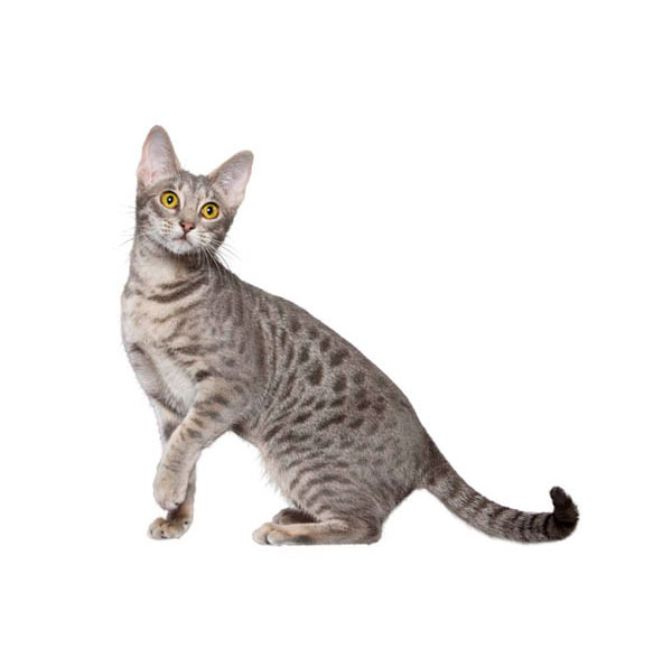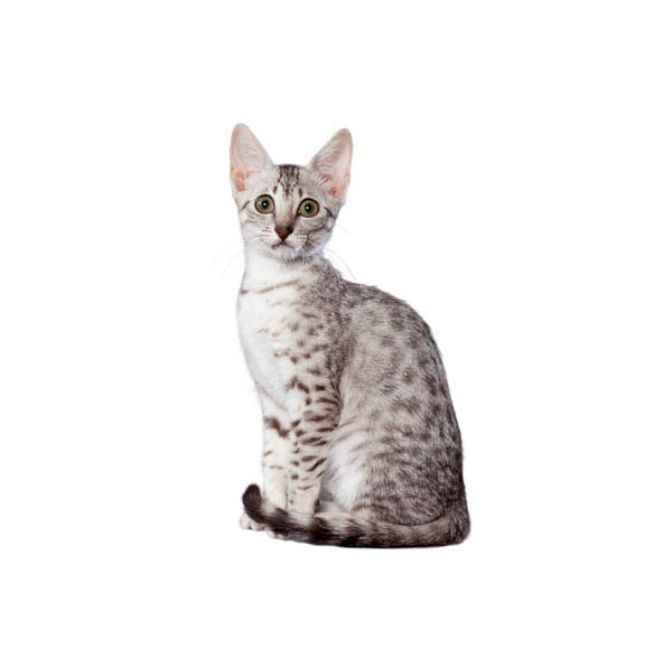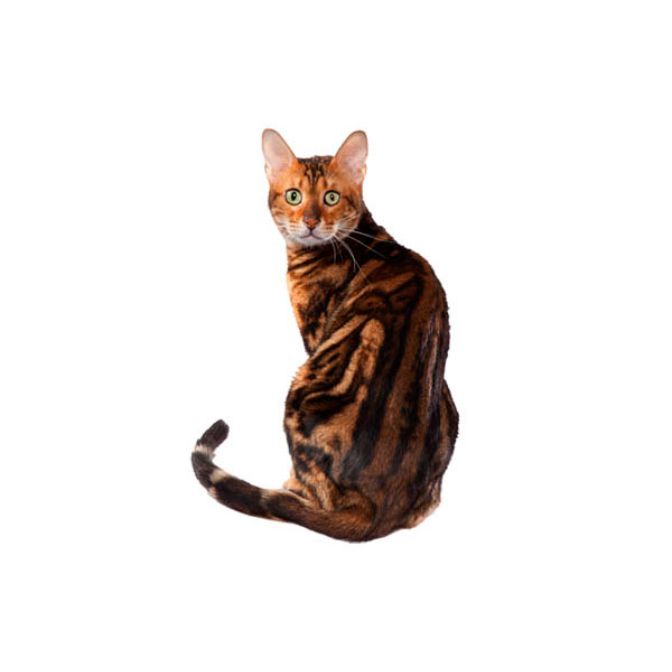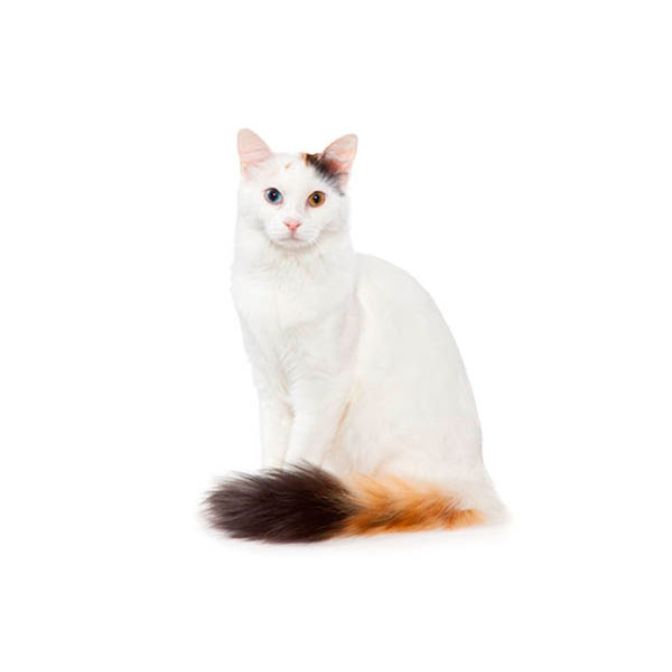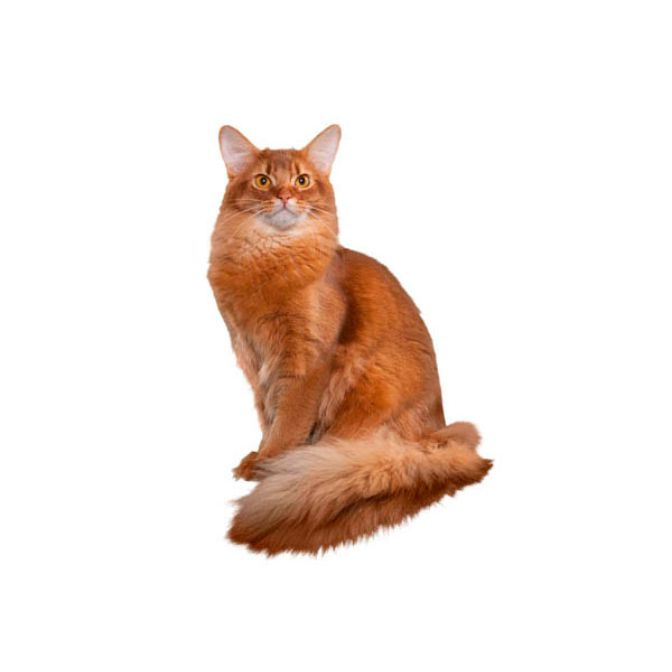Ocicat
The Ocicat is a relatively new breed of cat that resulted from an accidental mating in the 1960’s. A seal point Siamese and a Usual Abyssinian were mated in an attempt by Virginia Daly of the Dalai Cattery in America to produce an Abyssinian pointed Siamese.
Medium To Large
Short
High
4 to 6.5 kg
Tawny, chocolate, cinnamon, blue, lavender, fawn, ebony silver, chocolate silver, cinnamon silver, blue silver, lavender silver, fawn silver
Although Ocicats have been bred to look like wild cats their temperament does not reflect this. They are very intelligent and playful, curious and friendly and never show any aggressiveness. They prefer, like all active cats, to have company and are very happy with human companions but if the humans are out at work all day another Ocicat is their favourite playmate. The Ocicat is very adaptable and, if in the interests of safety, the garden is to be out of bounds, they will be quite happy with an indoor gymnasium of scratching post and stairs.
The Ocicat was named because of its resemblance to the Ocelot, a wild cat with a spotted coat. But it is not just the coat pattern that contributes to the wild look but the natural graceful lithe and agile movement that these cats show when in action. They display many similarities to the wild cats when hunting even pretend prey or when racing around for fun. The Ocicat is a medium to large cat with a well-spotted coat. The head is wedged shaped, longer than wider, with a shallow curve from muzzle to cheek. There is a definite but gentle rise from the bridge of the nose to the brow. The muzzle is broad and well defined and there is a hint of squareness to the jaw. The chin is deep and well defined, and the bite is broad and level. The head is carried on an elegant, arched neck. The body is solid with substantial bone and muscle. The chest is deep and broad, and the back is straight and slightly higher at the rear giving the impression of a wild hunting cat. The legs are powerful and well-muscled, of medium length with compact oval paws. The tail is long and shows virtually no tapering from a broad base.
10 to 15 years.
The Ocicat’s coat is short with a satin texture and a lustrous sheen. The coat should be close lying and sleek and definitely not woolly. The spots are well scattered in a distinctive pattern on the sides of the body, shoulders and hindquarters, extending down the legs and on to the belly. The Ocicat is bred in many colours. All the colours are clear and the spotting neither blurred nor faint. The face and stomach will be paler than the rest of the body and the darkest part of the cat will be the tip of the tail. The tail tip colour is the definitive colour and this decides what colour the cat is.
The Ocicat has an agouti coat and each hair has several bands of colour and where the dark bands fall together this forms a spot. The eyes are edged with the darkest colour of coat and surrounded with the lightest colour as though the cat has applied eye makeup. The forehead displays the distinctive tabby ‘M’ and there are dark markings on the face extending up over the head and breaking into small spots on the lower neck and rows of spots extending along the back to the tail. The tail shows alternate spots and rings of darker colour ending with a dark tip. Scattered spots appear across the shoulders and hindquarters extending as far as possible down the legs.
The Ocicat does not require excessive grooming because of its short close-lying coat. They will fastidiously wash themselves and keep their coats in good condition but they will enjoy the attention that comes with grooming.
Ocicats are generally healthy cats and are not susceptible to any particular health problems. They need regular vaccination and worming programs like any other breed of cat. Once the Ocicat reaches about eight years of age it is advisable for the vet to give a health check at the same time as the annual vaccination. Your vet may recommend cleaning the teeth and blood test to check for liver and kidney function.
An active adult Ocicat will require 80 Kcals per kg of bodyweight per day but in reality, cats like the Ocicat rarely overeat and in practice it will become obvious how much your cat requires each day.
The Ocicat is a relatively new breed of cat that resulted from an accidental mating in the 1960’s. A seal point Siamese and a Usual Abyssinian were mated in an attempt by Virginia Daly of the Dalai Cattery in America to produce an Abyssinian pointed Siamese. One of the resultant kittens then bred back to a chocolate point Siamese. The kittens from that mating were an assortment of colours and coat patterns but one kitten had an amazing coat with gold spots on an ivory background and looked like the wild Ocelot, hence the name Ocicat. Mrs Daly continued to breed Ocicats and introduced the American Shorthair into the breeding programme, which brought the lovely silver colours and strong musculature and bone. By the early 1980’s the Ocicat was increasing in popularity and the breed gained provisional status in America and outcrosses to any breed except Abyssinian was stopped. The breed achieved Championship status in America in 1987. In 1988 the first Ocicats arrived in Britain and they have grown in popularity here as they have in the USA.
In 1964, Virginia Daly of Berkleg, Mich., experimentally crossed a Siamese with an Abyssinian hoping to produce an Aby-point Siamese. A male kitten in the litter was ivory with golden spots and copper eyes. Daly’s daughter named the breed Ocicat because the kitten, “Tonga,” resembled the spotted wildcat. Tonga was neutered and sold as a pet. A noted geneticist at Georgia University, Dr. Clyde Keeler, wanted to see a domestic cat that mimicked wild species that were becoming extinct. At his request, the breeding of Tonga’s parents was repeated, producing another spotted male, Dalai Dotson, who became the father of the Ocicat breed.
